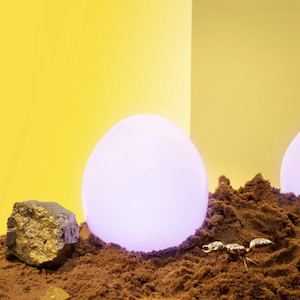Revamp; Shaping Space, Skating Space
By Jo Phillips
The curves of Finnish architect Alvar Aalto’s 1930s swimming pool design – a playful, kidney-shaped concrete basin – would, in something of an accident, have a profound effect on skateboarding. In the ‘70s, similar ‘kidney’ pools, distinctly different from the rectangular pools that had previously glistened as symbols of the ‘good life’ across the suburban landscape of California, became small sanctuaries for skaters during the state’s 1975 drought: armed with nothing but their boards and roaring confidence, the skaters illegally broke into properties with empty pools, sailing over fences to throw a few tricks against these little havens. In these backyards, architecture and skateboarding developed an unexpected friendship that still reigns.
Having spent more time than most looking at urban- and cityscapes, questioning the possibilities of space, and going against the norm, we take a look at the contemporary architects and collaborative groups engaging with this free spirited subculture, revamping spaces while making sure that they are fit for purpose.
Increasingly, skateparks have brought about new perspectives on space and layout, particularly surrounding how individuals and space can interact, that is, how we can perform with – rather than simply live in – the space that surrounds us. Danish studios CEBRA and Glifberg+Lykke have explored this interaction, creating an igloo-shaped street sports centre and skatepark, titled ‘StreetDome’, on the harbour front of Haderslev, Denmark. Along the banks, stairs and slopes of the green-tiered dome, which grows out of the park’s concrete landscape, skaters discover new flows, rhythms and combinations, breathing new life into this once forgotten corner of Denmark. Inside, the series of pools scooped out of the floor – featured next to a street basket court and central boulder structure – are a continuation of this little skate mecca.
Images, taken by Mikkel Frost, courtesy of CEBRA
Kerameikos, downtown Athens, architect Zachos Varfis has transformed a dilapidated courtyard in this historical area into a positive outlet for adult skaters with his design, known as the Latraac skate bowl. Made of CNC cut plywood and accompanied by a garden café, the bowl sits in Kerameikos as a beacon of life in a country rebuilding itself after the collapse of its economy. Under Varfis, this new architectural space, drawing people in from the surrounding community, is one of reconnection and inclusivity, filled with a vibrant energy that extends beyond the skate bowl.
Images courtesy of Zachos Varfis
At one point, a peanut factory, and at another, a go-kart track, a hall located in the former industrial district of Calais, France, has been converted into an indoor skatepark and youth centre, named Zap’ Ados, by French studio Bang Architectes. The facility, made visible by its orange mesh exterior, is a symbol of urban renewal, with vertical windows offering views inside to the sinusoidal ceiling and open skating space.
Devoting his entire practice to designing skateparks, pro-skateboarder turned landscape architect Janne Saario has consistently turned open spaces into public skate spots that reflect his own avid interests in design and art, and his time spent navigating concrete paving with his boards since the early age of six. Sculpture, too, has a strong presence in many of his parks, including Järvenpää skatepark, Finland, and Örebro skatepark, Sweden – both of which feature sculptural works that tower over the skateboarders.
Images courtesy of Janne Saario
With Iain Borden’s recent book Skateboarding, Space and the City: Architecture and the Body, the relationship between skateboarding and architecture has become increasingly important beyond the backyards of California.














